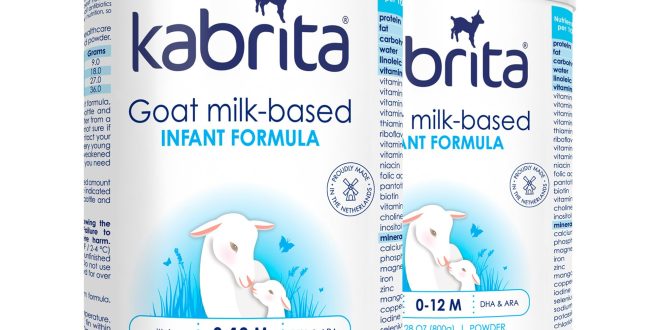Are you on the hunt for a gentler, more natural option for your little one’s formula? Well, Kabrita goat milk formula might just be what you’re looking for! As more parents explore alternatives to traditional cow’s milk formulas, Kabrita has been popping up on radars everywhere. It emphasizes easy digestion and providing all those essential nutrients babies need. So, let’s dive into what makes Kabrita a front-runner in the world of infant nutrition – could it be the answer to those tiny tummy troubles?
Understanding Goat Milk Formula
The Composition of Goat Milk
Ever wondered what exactly is in goat milk that makes it so different? Well, goat milk naturally contains different types of proteins and fats compared to cow’s milk. These differences can actually make a big difference (pun intended!) in how your baby digests it. It’s not just a simple swap; it’s about understanding the unique makeup of what your little one is consuming. Who knew milk could be so complex, right?
Why Goat Milk is Easier to Digest
Okay, so why all the hype about easier digestion? Goat milk forms a softer curd in the stomach compared to cow’s milk. This means that your baby’s tummy doesn’t have to work as hard to break it down. Less work equals less potential for discomfort, gas, and fussiness. And honestly, who doesn’t want a happier, more comfortable baby? I know I do!
Nutritional Benefits of Goat Milk Formula
Beyond being gentle on the tummy, goat milk is also packed with essential nutrients. It’s a good source of vitamins A and D, plus important minerals like calcium and magnesium, all vital for your baby’s growth and development. Kabrita fortifies their formula to meet the specific nutritional needs of infants, ensuring they get everything they need to thrive. It’s like a nutritional powerhouse in a bottle!
Kabrita: A Closer Look
Key Ingredients and Formulation
So, what’s actually in Kabrita? Besides the goat milk, Kabrita includes other important ingredients like lactose (a natural sugar found in milk), vegetable oils, and added vitamins and minerals. The formulation is carefully designed to mimic the nutritional profile of breast milk as closely as possible. No weird surprises here, just good stuff aimed at supporting your baby’s development. Makes you feel good about what you’re feeding your little one, doesn’t it?
Kabrita’s Manufacturing Process
How Kabrita is made is just as important as what goes into it. Kabrita follows strict quality control standards throughout the entire manufacturing process. This ensures the formula is safe, consistent, and meets all the necessary regulations. Knowing there’s so much care taken gives you an extra layer of peace of mind. I like that; it’s one less thing to worry about!
Available Kabrita Products
Kabrita offers a range of products to suit different stages of infancy. From their gentle first infant formula to follow-on formulas for older babies, there’s something for every age group. Plus, they offer various sizes, so you can choose what works best for your needs. Options are good, especially when it comes to feeding your baby.
Addressing Common Infant Feeding Concerns
Easing Digestive Discomfort
One of the main reasons parents turn to Kabrita is to help ease digestive discomfort. If your little one experiences gas, bloating, or constipation with cow’s milk formula, the switch to goat milk-based formula might make a noticeable difference. It’s not a magic bullet, but many parents report significant improvements. Wouldn’t that be a game-changer?
Managing Allergies and Sensitivities
While goat milk formula isn’t suitable for babies with a confirmed cow’s milk protein allergy (CMPA), it can be a good option for babies with sensitivities. The proteins in goat milk are different and can be less allergenic for some infants. Always chat with your pediatrician before making any changes, though. Better safe than sorry, right?
Kabrita vs. Cow’s Milk Formula: A Comparison
When you stack Kabrita up against cow’s milk formula, the key differences come down to protein structure and digestibility. Kabrita tends to be gentler on the tummy, and some babies find it easier to tolerate. However, cow’s milk formula works perfectly well for many infants. It really depends on your baby’s individual needs and how they respond. Everyone’s different, after all!
The Science Behind Kabrita
Clinical Studies and Research
Is there any real science to back up these claims? Yes, actually! Clinical studies have explored the benefits of goat milk formula, often highlighting its digestibility and nutritional value. This research provides a solid foundation for understanding why Kabrita can be a good choice for some babies. Evidence-based decisions are always a plus in my book.
Expert Opinions and Recommendations
What do pediatricians think? Many healthcare professionals recognize goat milk formula as a viable alternative for infants who don’t tolerate cow’s milk formula well. While it might not be the first recommendation for every baby, it’s definitely on the radar for those with specific needs. Always good to hear what the experts have to say!
Parent Testimonials and Reviews
Real-Life Experiences with Kabrita
Okay, let’s get to the real stuff – what do actual parents think? Plenty of moms and dads rave about Kabrita, sharing stories of how it eased their baby’s digestive issues and improved their overall well-being. Of course, experiences vary, but the positive feedback is hard to ignore. Makes you wonder, doesn’t it?
Success Stories and Positive Outcomes
You hear about babies who were constantly fussy and uncomfortable suddenly thriving after switching to Kabrita. These success stories can be incredibly encouraging, especially when you’re feeling lost and overwhelmed. It’s like finding a little ray of sunshine in the sometimes-cloudy world of infant feeding. Gives you hope, right?
Making the Switch to Kabrita
When to Consider Kabrita
So, when should you actually think about making the switch? If your baby is showing signs of digestive distress or sensitivity to cow’s milk formula, it might be worth exploring Kabrita. Also, if you’re just looking for a more natural option from the get-go, it could be a great choice. But again, always loop in your pediatrician!
How to Transition Your Baby
Switching formulas isn’t something you want to do cold turkey. A gradual transition is usually best, mixing Kabrita with your current formula and slowly increasing the ratio over a week or so. This gives your baby’s tummy time to adjust. Slow and steady wins the race, especially when it comes to sensitive little digestive systems.
Important Considerations and Precautions
Before you make any changes, have a chat with your pediatrician. Goat milk formula isn’t suitable for all babies, and it’s essential to rule out any underlying medical conditions. Also, keep an eye out for any signs of allergic reactions when introducing a new formula. Better to be cautious, wouldn’t you agree?
So, is Kabrita the right choice for your baby? Well, it really depends on your individual needs and preferences. But with its focus on gentle digestion and natural ingredients, it’s definitely worth considering if you’re looking for a different approach to infant nutrition. Maybe give it a try and see if it works for your little one – who knows, it might just be the answer you’ve been searching for! And hey, let me know how it goes; I’m always curious to hear about other parents’ experiences.
 Beverage Zone
Beverage Zone




